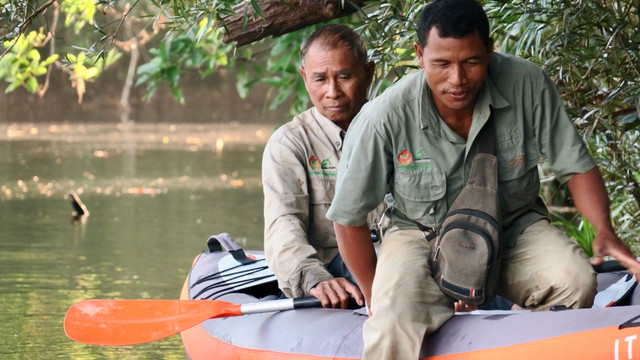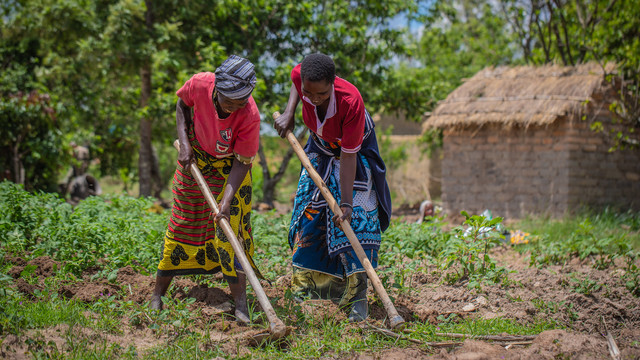Does the global biodiversity framework offer a plan B for protected areas?
Ahead of IUCN’s World Conservation Congress, Phil Franks examines why – to date – strategies to halt biodiversity loss have largely failed, and discusses a way forward for protected areas and other forms of area-based conservation that is not only inclusive but also equitable.


Deforestation for maize near Kirindy village, Madagascar. The country has received vast sums of money for conservation since 1990, but still has one of the highest rates of deforestation in Africa (Photo: Olaf Zerbock, USAID Biodiversity & Forestry, CC BY-NC 2.0)
The fifth Global Biodiversity Outlook gives us the starkest warning yet of the impending crisis of biodiversity and associated ecosystem services.
This is a crisis not only because of the level of damage to the environment on which human life depends but also because strategies to halt biodiversity loss, developed since 1992 under the UN Convention for Biological Diversity (CBD), have largely failed.
Madagascar is a case in point. Having received close to US$1bn in donor funding for conservation since 1990, it still has one of the highest rates of deforestation in Africa while measures taken to protect biodiversity have had major negative impacts on the wellbeing of many local communities.
Not only have conservation measures largely failed but, despite substantial research over this period, there is no consensus on what we should be doing differently in order to succeed.
Prone to failure
The central pillar of all national strategies for biodiversity conservation is protecting certain sites of natural ecosystems from human-induced threats that may damage them, typically by designating them as protected areas, using spatial planning and/or customary systems of rural communities.
With such areas, it is typically difficult to exclude people who might cause damage other than by fencing, and the use of a resource by one person generally reduces the opportunity for others to use it.
So, unless one stakeholder has the power to coerce everyone else to comply with its rules and to ignore issues of equity and justice – as in classic ’fortress conservation’ – a multi-stakeholder collaborative approach is needed to avoid a downward spiral of degradation.
Elinor Ostrom won a Nobel prize for her work in defining eight critical factors for the success of this approach, over and above general governance challenges, which are largely issues of equitable environmental governance at site level.
Equitable governance
The CBD recently clarified the meaning of ‘equitable’ in this context through endorsing guidance developed by an IIED-led initiative.
The diagram below shows the three dimensions of equity – recognition, procedure and distribution – and their definitions embedded within a set of enabling conditions.

(Source: adapted from Examining equity: a multidimensional framework for assessing equity in payments for ecosystem service, McDermott et al (2013), Environmental Science and Policy 33: 416-427)
Procedure: inclusiveness of rule and decision-making, transparency, accountability, access to justice and dispute resolution
Distribution: sharing of costs and benefits among different actors, and how the costs experienced by some actors are mitigated
Killer assumptions in a theory of change?
As with globally led action on climate change, the new UN post-2020 global biodiversity framework (GBF) has a theory of change based primarily on policy action and planning at a national level.
However, while national governments have the power to develop and implement changes in energy, transport and industry, many have less control over the use of land and other natural resources in rural areas because their environmental governance is weak and undermined by vested interests.
The theory of change of the GBF is based on countries making major changes in environmental governance at national level and driving these downwards to make existing protected areas more effective and double the area of land and sea covered by protected areas and other forms of area-based conservation (’conserved areas’ for short).
But is it possible to make such changes in environmental governance policy and, crucially, its implementation within 10 years by working at the national level? Experience to date suggests not. Yet we continue to assume it’s just a matter of ambition, political will and funding.
These are killer assumptions. We need to develop a plan B for protected and conserved areas. Some good news from recent work by IIED is that – in Africa at least – there is no significant correlation between the macro level quality of governance of a country and conservation outcomes of its protected areas.
Even where governance at national level is weak, protected and conserved areas can still do well.
Plan B
Our plan B for protected and conserved areas remains focused on transformative change in environmental governance, making it more effective and more equitable, but driven by stakeholders closest to the sites and landscapes in question, rather than national government.
The role of national government is creating the conditions to enable this to happen through the devolution of authority and by providing the necessary measures and resources for more equitable governance at the site level.
From thousands of success stories from site level, we know what equitable governance systems look like. The key ingredients for success – social, political and natural capital – are already present in many situations. More equitable governance arrangements can emerge from these ingredients in a relatively short time period – less time than it takes to reform national institutions.
Yes, with bottom-up approaches there is the challenge of scaling up and we need some real innovation here. But in this respect the world is changing in a positive way. There are increasingly successful locally-led movements – for example that for locally-led adaption to climate change – and the increasingly transformative potential of internet-based networking.
As negotiation of the GBF intensifies in the lead up to the CBD Conference of Parties in April 2022 there are ever more alarm bells ringing and calls for ’transformative change’.
We believe that governance and equity are the key and now is the time innovative solutions (for example, our plan B) that could enable this new 10-year strategy to succeed where its predecessors have failed.





